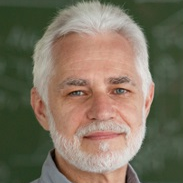Photoemission and Excitation Properties of Nanomaterials by Computational Methods
A special issue of Nanomaterials (ISSN 2079-4991). This special issue belongs to the section "Theory and Simulation of Nanostructures".
Deadline for manuscript submissions: closed (15 April 2023) | Viewed by 11129
Special Issue Editor
2. Donostia International Physics Center (DIPC), 20018 Donostia/San Sebastián, Basque Country, Spain
3. IKERBASQUE, Basque Foundation for Science, 48013 Bilbao, Basque Country, Spain
Interests: theory of photoemission; electron scattering; computational methods of electronic structure theory
Special Issue Information
Dear Colleagues,
Photoelectron spectroscopy is the source of the most detailed information about the electronic structure of nanomaterials. The experimental progress in energy, angular, spin and temporal resolution calls for the application of advanced theoretical modeling in order to infer microscopic electronic properties. This poses a variety of challenges related to the simulation of the fundamental aspects of photoexcitation, photoelectron transport, and detection. Conclusive analysis of the spectroscopic data depends on an accurate description of the ground state, a realistic treatment of the perturbing field, the inclusion of the scattering of the outgoing electron, and revealing essential factors necessary to trace the recorded signal to the characteristics of the studied material. Apart from the calculation of the excited states, an adequate description of photoemission requires taking into account the dielectric response, including the screening of the low-frequency field (instrumental for the laser streaking technique) and plasmon excitation important for the lifetime effects.
This Special Issue of Nanomaterials will attempt to address various aspects and ingredients of the stationary and time-resolved photoemission from molecules, clusters, films, and surfaces approached with state-of-the-art ab initio and model computational methods. It is aimed at reflecting the current progress in quantitative understanding of photoemission and underlying electronic processes.
Prof. Dr. Eugene Krasovskii
Guest Editor
Manuscript Submission Information
Manuscripts should be submitted online at www.mdpi.com by registering and logging in to this website. Once you are registered, click here to go to the submission form. Manuscripts can be submitted until the deadline. All submissions that pass pre-check are peer-reviewed. Accepted papers will be published continuously in the journal (as soon as accepted) and will be listed together on the special issue website. Research articles, review articles as well as short communications are invited. For planned papers, a title and short abstract (about 100 words) can be sent to the Editorial Office for announcement on this website.
Submitted manuscripts should not have been published previously, nor be under consideration for publication elsewhere (except conference proceedings papers). All manuscripts are thoroughly refereed through a single-blind peer-review process. A guide for authors and other relevant information for submission of manuscripts is available on the Instructions for Authors page. Nanomaterials is an international peer-reviewed open access semimonthly journal published by MDPI.
Please visit the Instructions for Authors page before submitting a manuscript. The Article Processing Charge (APC) for publication in this open access journal is 2900 CHF (Swiss Francs). Submitted papers should be well formatted and use good English. Authors may use MDPI's English editing service prior to publication or during author revisions.
Keywords
- photoemission
- excited states
- spin-resolved ARPES
- time-resolved ARPES
- electronic structure
- spectral function
- electron scattering
- Schrödinger equation
- quasiparticles
- density functional theory
- ab initio
- computational methods
- thin films
- surfaces
- nanostructures






